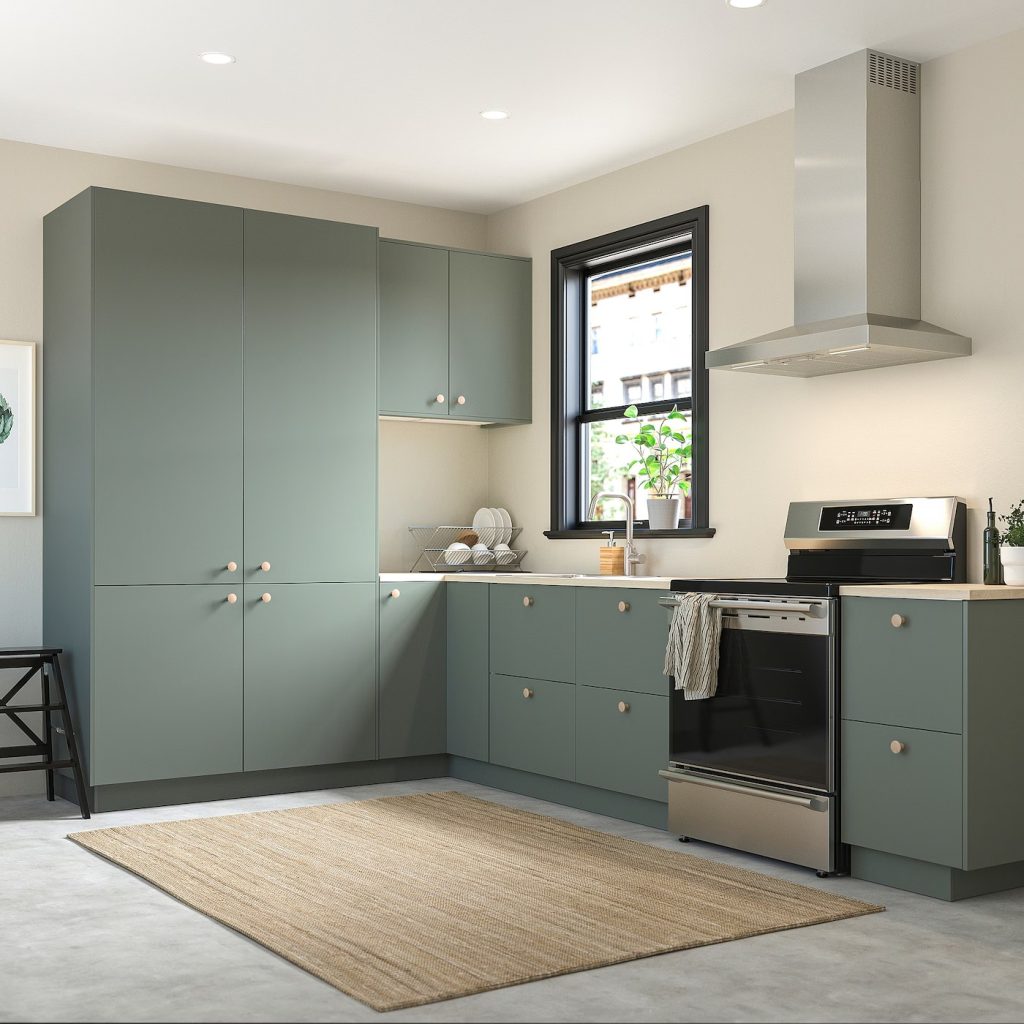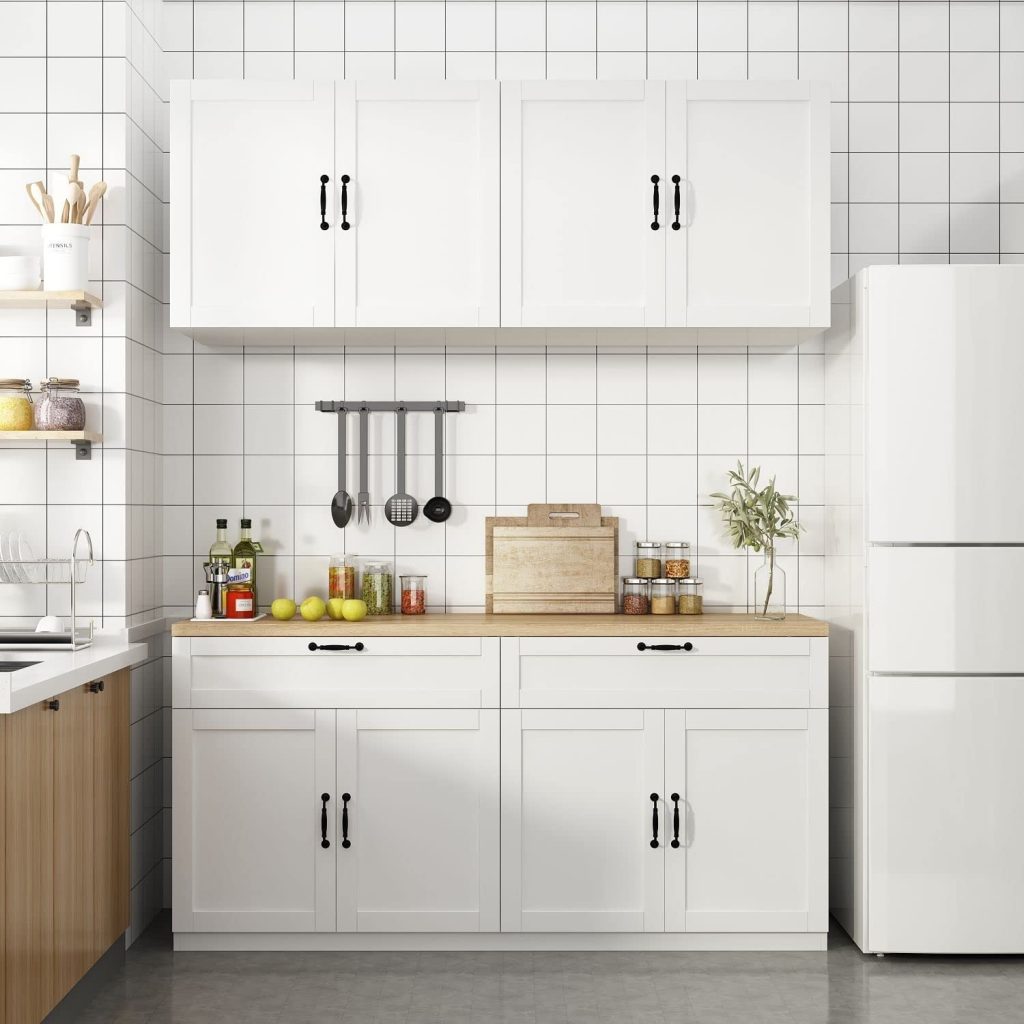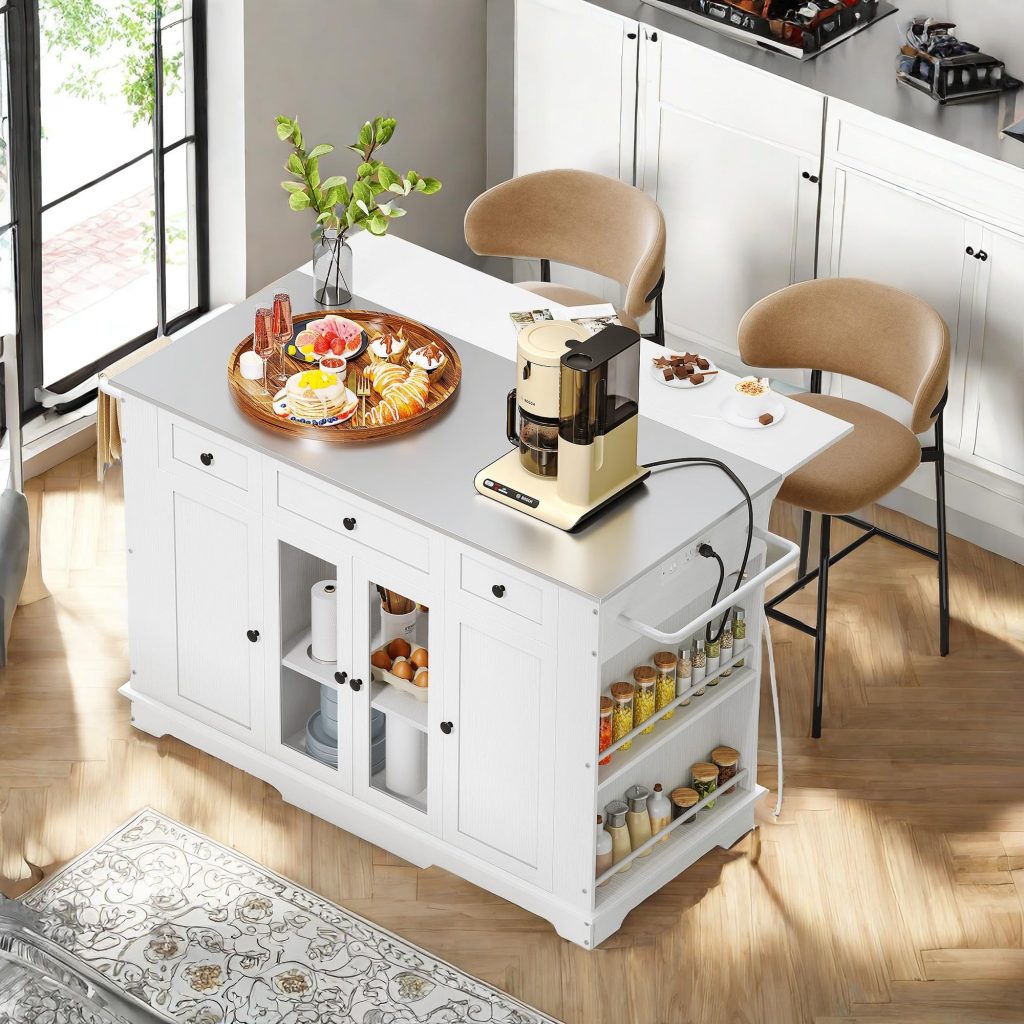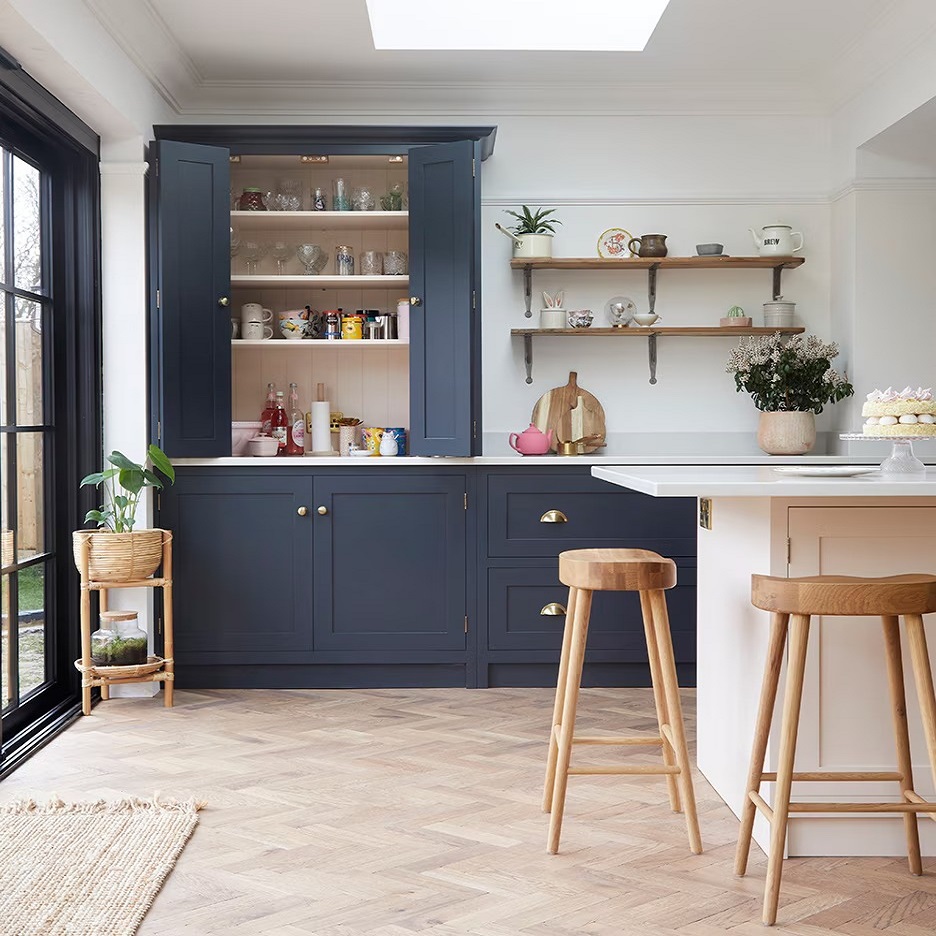Introduction to Kitchen Cabinet Finishes
Choosing the right kitchen cabinet finishes is crucial for both aesthetics and functionality. Different finishes not only give your kitchen a distinct look but also affect how your cabinets stand up to daily use. In this section, we’ll explore various finishes such as paint, stain, laminate veneer, thermofoil, and varnish. Each type has its own pros and cons, which can influence your decision, depending on your lifestyle, kitchen usage, and design preferences. Understanding these finishes will help you make an informed decision to achieve a kitchen that not only looks great but is also practical.

Painted Kitchen Cabinet Finishes
When it comes to kitchen cabinet finishes, painting is a timeless choice. It offers versatility in color and finish, fitting various design themes. Let’s dive into the details of painted finishes, including their types, and the advantages and drawbacks they present.
Types of Paint Finishes
A range of paint finishes is available for kitchen cabinets. These include glossy, satin, and matte options, each reflecting light differently and providing distinct looks. Glossy finishes brighten up the space by reflecting more light, while matte offers a subtler, less reflective surface.
Pros and Cons of Painted Finishes
Painted finishes come with several benefits. They offer numerous color choices, allowing for full customization. They’re also known for their durability and ease of maintenance, crucial for busy kitchens. However, some drawbacks include potential for showing smudges and the chance of chips or peeling with low-quality paints.
Stained Kitchen Cabinet Finishes
When selecting kitchen cabinet finishes, stained options offer a touch of natural beauty. The process involves applying a coat of stain that soaks into the wood, enhancing the grain while providing color. Now, let’s discuss the types available and their pros and cons.
Varieties of Stain Finishes
Stain finishes come in a spectrum of shades, influenced by the wood’s original color. From light oak to rich walnut, choices vary. Transparent stains allow wood patterns to show, while solid stains give a more uniform appearance.
Advantages and Disadvantages of Stained Finishes
Stained finishes boast several advantages. They highlight wood’s natural patterns, are generally durable, and easier to touch up compared to other finishes. The maintenance is straightforward, a significant plus. But, there are some limitations. Stain finishes offer fewer color options and don’t hide blemishes. They can fade over time and may be more vulnerable to water damage. Weighing these factors is key when making your kitchen cabinet selection.

Laminate Veneer Finishes
Laminate veneer finishes offer a blend of beauty and functionality for kitchen cabinets. They are a cost-effective choice that does not compromise on a high-end look. Now, let’s delve into the details you need to know.
Exploring Colors and Patterns
Laminate veneers come in numerous colors and patterns. These include options that mimic wood grain or provide solid hues for a more consistent appearance. This variety allows for flexibility in kitchen design, enabling you to match or contrast with your home’s decor.
Benefits and Drawbacks of Laminate Veneer
The advantages of laminate veneer are notable. They are budget-friendly, with costs generally lower compared to real wood. Laminate is known for its resistance to water and scratches, making it suitable for busy kitchens. Maintenance is straightforward, often requiring just a wipe down.
However, there are some cons to consider. Laminate can peel or chip over time, especially if not properly cared for. While durable, it is not as robust as solid wood. The installation can be tricky, something to bear in mind if planning a DIY project.
In short, laminate veneer is an excellent option for those seeking a balance of style, durability, and affordability in kitchen cabinet finishes. By weighing the pros and cons, you can determine if this finish aligns with your kitchen design goals and lifestyle needs.
Thermofoil Veneer Finishes
Thermofoil veneer finishes offer modern appeal with their sleek and uniform look. These finishes work well in contemporary kitchens and come with several benefits and challenges. Let’s uncover what you should know about thermofoil as a kitchen cabinet finish option.
Characteristics of Thermofoil
Thermofoil veneers are made by applying a vinyl layer over a substrate, commonly MDF. The result is a smooth, non-porous surface. Thermofoil comes in limited colors but is known for its glossy look. It is not as heat-resistant as other materials but excels in moisture resistance.

Pros and Cons of Thermofoil Finishes
Thermofoil finishes stand out for their affordability and ease of cleaning. They are a popular choice for modern kitchen designs due to their smooth and glossy appearance. However, their heat sensitivity can be an issue near appliances. Color choices are limited compared to other finish types.
Pros:
- Budget-friendly
- Smooth, clean look
- Resistant to water and stains
- Easy to clean with soap and water
Cons:
- Not as strong as solid wood
- Can suffer from heat damage
- Limited in colors and textures
- May be tricky to install
Choosing thermofoil veneer finishes means considering these factors. This finish might be perfect if you seek a stylish, low-maintenance kitchen on a budget. Just make sure to use it away from high-heat areas and accept the color limitations.
Varnish as a Finish Option
When we enter the realm of varnishes, we’re dealing with protectants, known best for bringing out the natural beauty of wood cabinets as well as offering a durable barrier against daily wear and tear. Here’s what you need to consider when opting for varnished kitchen cabinet finishes.
Types of Varnish
When it comes to varnishes, you have a few options:
- Oil-based varnish, known for its robust protection.
- Water-based varnish, which is easier to apply and less odorous.
- Polyurethane, a highly durable and resistant option.
Varnish types each have their unique properties and uses, ideal for different kitchen scenarios.
Varnish Advantages and Disadvantages
Varnished finishes are famed for their smoothness and ability to protect kitchen cabinets from moisture, scratches, and fading. Here are the pros and cons:
Pros:
- They create a durable surface.
- Varnishes are easy to clean.
- They protect from different types of wear.
- Varieties of sheen are available.
Cons:
- Some can yellow as they age.
- Strong odors may be present during application.
- May need professional application for best results.
- Periodic reapplications might be necessary.
If delving into the varnished look for your cabinetry, bear these points in mind. Do you need the rugged longevity that varnish provides, or are you prepared for the maintenance? These finishes are perfect for those who appreciate the innate patterns of wood and also seek a heavy-duty protective coating.
Factors to Consider When Choosing Cabinet Finishes
Choosing the right kitchen cabinet finishes involves several important factors. Here, we break down what to consider to ensure you make the best choice for your home.
Material and Design Considerations
The type of material for your cabinets plays a huge role in determining the appropriate finish. High-density fiberboard (HDF) and natural wood are two popular choices, each supporting different finishes effectively. HDF works well with paint, laminate, and thermofoil, offering a sleek, modern look. Natural wood, on the other hand, showcases a classic beauty best accentuated with stain or varnish.
Your home’s overall design aesthetic is equally crucial. Whether it’s a rustic farmhouse, a sleek contemporary or something uniquely eclectic, your design preferences should guide your finish selection. For instance, consider matte finishes for a traditional look or glossy finishes for a more modern feel.

Lifestyle and Durability Needs
How you use your kitchen and your lifestyle also influence the choice of finish. For busy kitchens frequented by family and guests, choose durable, easy-to-clean finishes like high-gloss or semi-gloss paint. They withstand frequent cleanings and hide smudges well.
If ease of maintenance is a priority due to heavy usage, thermofoil or laminate finishes can be excellent choices. They resist water and stains, making cleanup a breeze. On the other hand, if the kitchen is less frequently used, you might opt for more aesthetically focused finishes like a beautiful stain that highlights natural wood grains.
